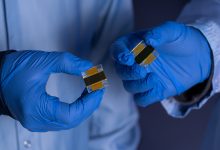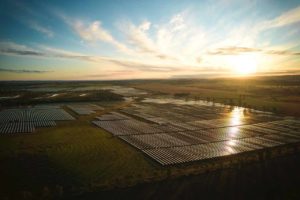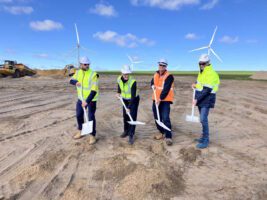Faster perovskite cell manufacturing may be around the corner, thanks to technology advances that swaps out a hot plate for a microwave.
The technique is called ‘annealing’, a heat treatment that changes the physical and sometimes chemical properties of a substance to make it less hard and more flexible.
It’s being used by a combined team of researchers from Macquarie University, University of New South Wales (UNSW), and solar startup Halocell Energy to reduce the amount of fabrication time for a perovskite cell from 30 minutes on said hot plate, to 30 seconds in what is effectively a microwave, reports PV Magazine Australia.
The microwave technology was invented by the Macquarie University team, led by Dr Binesh Puthen Veetti. The idea is to ‘cook’ the cells using microwave radiation, that selectively heats just the silicon.
Applying the concept in a commercial setting, alongside industry partner Halocell Energy, means the team is trying to triple the rate at which annealing happens while reducing energy use by 50 per cent, Veetti told the magazine.
While not quite as efficient as an oven, the team said in a paper in the US Journal Applied Physics Letters last year, it creates “massive” energy savings during manufacturing.
Furthermore, the microwave treatment means the plastic coating heat-treated onto the silicon plate can be more easily pulled off.
The higher, longer heat of putting the cell in an oven meant the economic option was landfill, and the sustainable option was crushing and heating to 1400°C followed by a chemical wash to get the ethylene vinyl acetate layer off.
Using a microwave means targeting heat to specific parts of the panel, so more intricate structures such as the newer heterojunction technology which weaves crystalline and amorphous silicon together, can be used, Veetti said in a statement last year.
The cleaner environment of a microwave causes less contamination as well, he said.
Although making perovskite technology functional outside the lab is the biggest mountain that researchers are trying to scale right now, production and quality control issues are also on the radar, such as the Macquarie microwave technology.
The perovskite family of solar materials holds great promise for creating solar modules that would be flexible – easily deposited onto most surfaces and lightweight; as well as cheap to produce and as efficient as silicon-based photovoltaic materials.
But a number of key hurdles remain blocking perovskite-based solar cells from becoming commercially competitive. Among these is the time-intensive work of trying to nail down the right variations of the materials with the best efficiency, cost, and – most most elusive of all – durability.
Late in 2023, Australian researchers built a machine learning model to allow them to make, reproduce and test new perovskite solar cells in weeks, rather than after years of human labour and error.
And also last year California company Caelux, which is building a 100 megawatt (MW) perovskite solar glass manufacturing facility, partnered with UNSW to simplify how the performance of individual perovskite solar cells are tested.
UNSW’s Artificial Intelligence, Characterisation, Defects, and Contacts (ACDC) Research Group is running an ARENA-funded project, due to wrap up in 2028, developing “high-throughput inspection techniques”.
Because perovskite cells are made by printing, coating or vacuum-depositing a layer of liquid inks between films the liquid can move, making parts of the cell more and less effective at producing energy.
Testing for problems on a large-scale production line to ensure uniform quality is not easy – or cheap – which is why companies like Caelux are interested in ACDC’s tech and figuring out how to integrate it into commercialised production lines.








